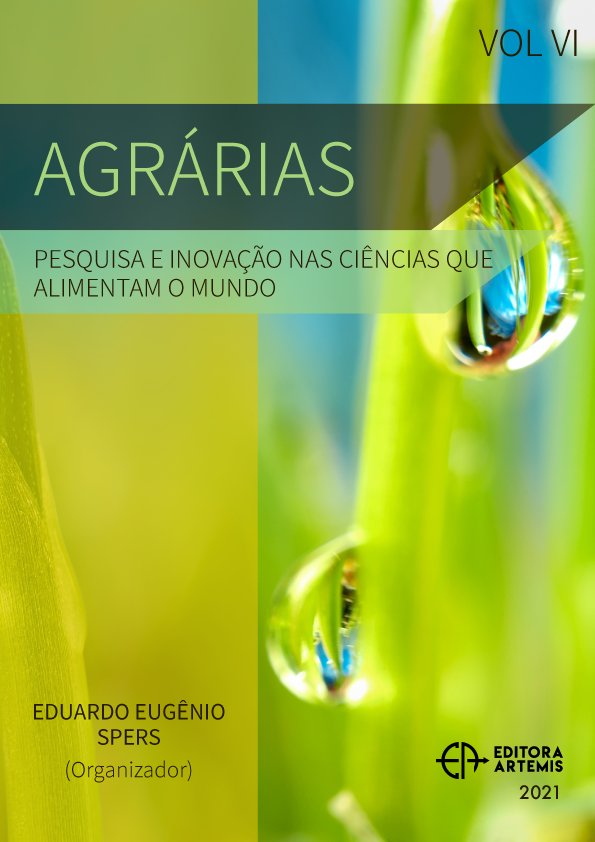
TRIOZA ERYTREAE EM CITRINOS – TRATAMENTO BIOLÓGICO COM CHRYSOPERLA CARNEA
A psila africana, Trioza erytreae (Del Guercio) (Hemiptera: Triozidae), foi assinalada pela primeira vez em Portugal na ilha da Madeira em 1994 e cerca de 20 anos mais tarde na região do Porto. Apesar desta praga ser considerada um potencial vetor da bactéria floémica Candidatus liberibacter spp., agente causal de huanglongbing, também denominado Greening, os estragos diretos que causa justificam que seja dada atenção a esta praga, mesmo na ausência da bactéria. Assim os objetivos deste estudo foram: (i) conhecer a biologia e estragos da psila africana e obter material que possa contribuir para a divulgação desse conhecimento; (ii) conhecer a distribuição da psila africana na árvore; e (iii) avaliar a eficácia da aplicação do predador comercial Chrysoperla carnea. O estudo foi realizado no Campus de Vairão (Vila do Conde - Portugal). Fez-se uma descrição da psila nos vários estados de desenvolvimento e dos estragos em citrinos. Para conhecer a distribuição na árvore foram efetuadas observações em círculos com 56 cm de diâmetro em 39 limoeiros, verificando-se maior número de rebentos, atacados e não atacados, nas zonas da copa orientadas a sul e a poente, seguido de nascente e por último norte (α=0,05). A proporção dos rebentos atacados para os quatro quadrantes não foi significativamente diferente (α=0,05), sendo em média 0,92 ± 0,03. Para o estudo da eficácia da aplicação do predador foram selecionadas 10 árvores (4 limoeiros, 4 laranjeiras e 2 tangerineiras) tendo sido aplicado o predador em 5 das 10 árvores. A incidência, medida pela presença da praga em cada folha, não diferiu significativamente entre as árvores tratadas e não tratadas (α=0,05). A quantificação da severidade, medida numa escala de zero a três, permitiu concluir que o tratamento reduziu significativamente a população da praga (α=0,05), podendo considerar-se que o tratamento foi eficaz.
TRIOZA ERYTREAE EM CITRINOS – TRATAMENTO BIOLÓGICO COM CHRYSOPERLA CARNEA
-
DOI: 10.37572/EdArt_3004213548
-
Palavras-chave: Psila africana, limoeiro, laranjeira, tangerineira, ninfas, praga
-
Keywords: African citrus Psyllidae, lemon tree, orange tree, mandarin tree, nymphs, pest
-
Abstract:
The African citrus psyllidae, Trioza erytreae (Del Guercio) (Hemiptera: Triozidae), was first noted in Portugal on the island of Madeira in 1994, and 20 years later in the Porto region in January 2015. In spite of this pest be considered a potential vector of the ploem-limited bacteria Candidatus liberibacter spp., causal agent of huanglongbing also called Greening, the direct damage caused by this pest justifies attention to this pest, even in the absence of the bacteria. Thus, the objectives of this study were: (i) to know the biology and damage of the African psyllid and to obtain material that may contribute to the dissemination of this knowledge; (ii) to know the distribution of the African psyllid in the tree; (iii) to evaluate the efficacy of the commercial predator Chrysoperla carnea. The study was conducted at Vairão Campus (Vila do Conde - Portugal). A description of the psyllid is made in the various stages of development and damage in citrus trees. In order to know the distribution (on the tree), observations were made in circles with a diameter of 56 cm in 39 lemon’s trees and the results showed that the number of flushes, attacked and not attacked, was greater in south and west, followed by east and lastly north quadrant. The proportion of flushes attacked by the psyllid was not significantly different for the four quadrants (α=0,05), and was in average 0,92 ± 0,03. To evaluate the efficacy of the release of the predator, 10 citrus trees were selected (4 lemon, 4 orange and 2 mandarin) and the predator was released in 5 of the 10 trees. The incidence, measured by the presence or absence of the pest in each leaf, is not significantly different in treated and untreated trees (α=0.05). The severity, measured on a scale of zero to three, allows us to conclude that the treatment reduced the pest population to significant levels (α=0.05) leading to conclude that the treatment was effective.
-
Número de páginas: 12
- Ana Alvares Ribeiro Marques de Aguiar
- Nuno Miguel Soares Martins de Carvalho
- Susana Maria Gomes Caldas Fonseca

